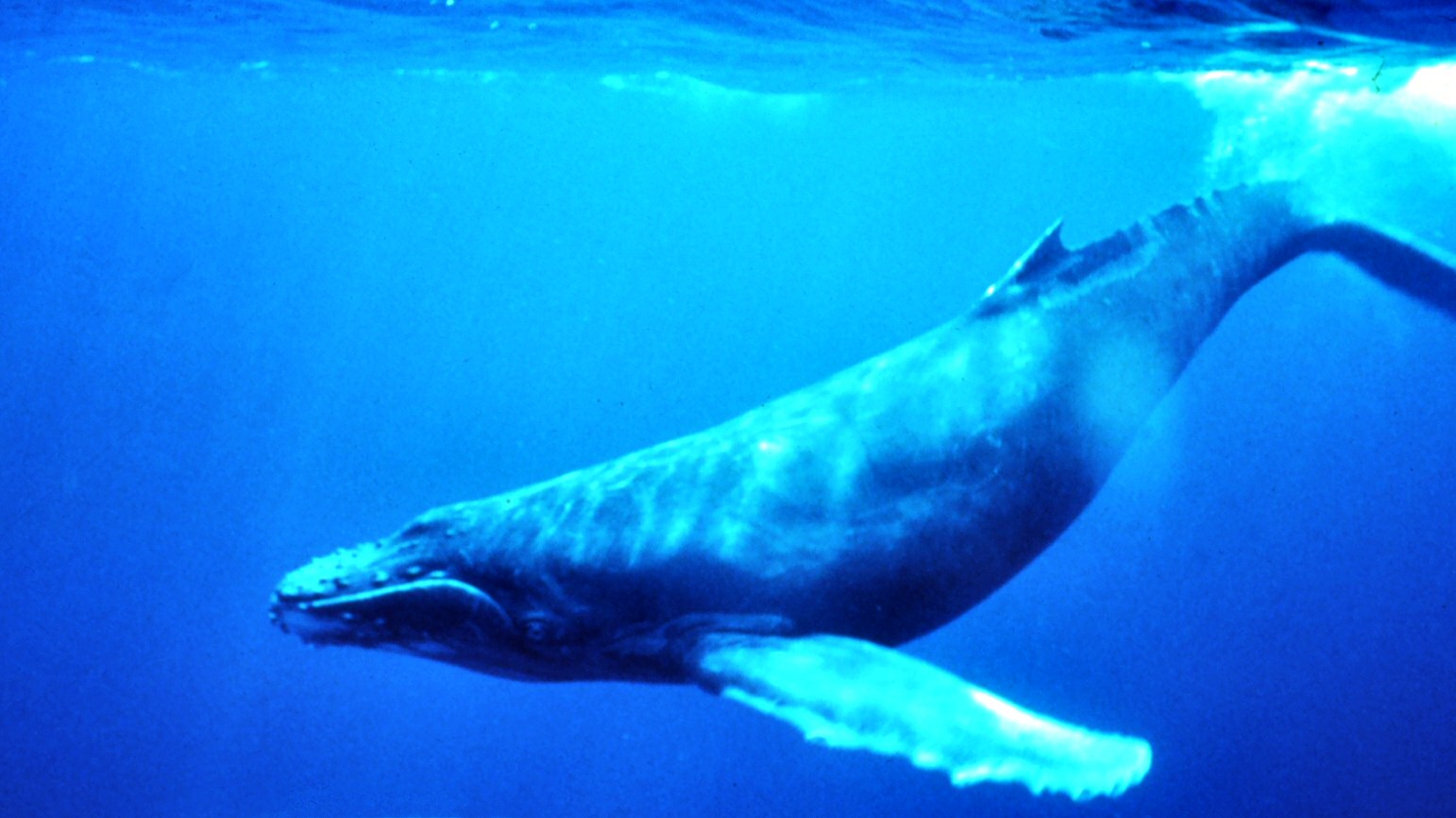Humpback Whale (Megaptera novaeangliae) - Wiki Humpback Whale
From Wikipedia, the free encyclopedia
[Photo] Humpback Whale, Megaptera novaeangliae.
The Humpback Whale (Megaptera novaeangliae) is a baleen whale. One of the larger rorqual species, adults range in length from 12???16 metres (40???50 ft) and weigh approximately 36,000 kilograms (79,000 lb). The Humpback has a distinctive body shape, with unusually long pectoral fins and a knobbly head. It is an acrobatic animal, often breaching and slapping the water. Males produce a complex whale song, which lasts for 10 to 20 minutes and is repeated for hours at a time. The purpose of the song is not yet clear, although it appears to have a role in mating.
Found in oceans and seas around the world, Humpback Whales typically migrate up to 25,000 kilometres each year. Humpbacks feed only in summer, in polar waters, and migrate to tropical or sub-tropical waters to breed and give birth in the winter. During the winter, Humpbacks fast and live off their fat reserves. The species' diet consists mostly of krill and small fish. Humpbacks have a diverse repertoire of feeding methods, including the spectacular bubble net fishing technique.
Like other large whales, the Humpback was a target for the whaling industry, and its population fell by an estimated 90% before a whaling moratorium was introduced in 1966. Stocks of the species have since partially recovered, however entanglement in fishing gear, collisions with ships, and noise pollution are ongoing concerns. Current estimates for the abundance of Humpback Whales range from about 30,000 to 60,000, approximately one third of pre-whaling levels. Once hunted to the brink of extinction, Humpbacks are now sought out by whale-watchers, particularly off parts of Australia and the United States.
Taxonomy
Humpback Whales are rorquals (family Balaenopteridae), a family that includes the Blue Whale, the Fin Whale, the Bryde's Whale, the Sei Whale and the Minke Whale. The rorquals are believed to have diverged from the other families of the suborder Mysticeti as long ago as the middle Miocene. However, it is not known when the members of these families diverged from each other.
Though clearly related to the giant whales of the genus Balaenoptera, the Humpback has been the sole member of its genus since Gray's work in 1846. More recently though, DNA sequencing analysis has indicated both the Humpback and the Gray Whale are close relatives of the Blue Whale, the world's largest animal. If further research confirms these relationships, it will be necessary to reclassify the rorquals.
The Humpback Whale was first identified as "baleine de la Nouvelle Angleteer" by Mathurin Jacques Brisson in his Regnum Animale of 1756. In 1781, Georg Borowski described the species, converting Brisson's name to its Latin equivalent, Balaena novaeangliae. Early in the 19th century Lac??p??de shifted the Humpback from the Balaenidae family, renaming it Balaenoptera jubartes. In 1846, John Edward Gray created the genus Megaptera, classifying the Humpback as Megaptera longpinna, but in 1932, Remington Kellogg reverted the species names to use Borowski's novaeangliae. The common name is derived from their humping motion while swimming. The generic name Megaptera from the Greek mega-/μεγα- "giant" and ptera/πτερα "wing", refers to their large front flippers. The specific name means "New Englander" and was probably given by Brisson due the regular sightings of Humpbacks off the coast of New England.
...
http://en.wikipedia.org/wiki/Humpback_Whale
| The text in this page is based on the copyrighted Wikipedia article shown in above URL. It is used under the GNU Free Documentation License. You may redistribute it, verbatim or modified, providing that you comply with the terms of the GFDL. |
